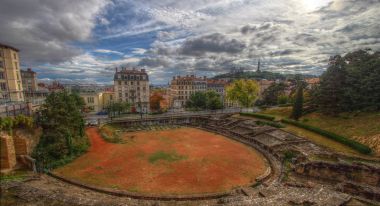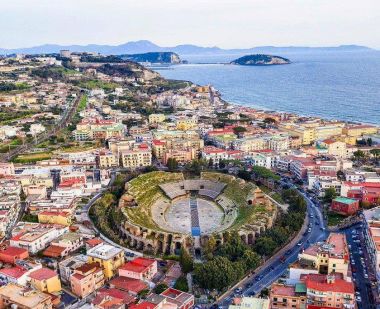ABOUT Lugdunum
Dive into the fascinating world of Colonia Copia Claudia Augusta Lugdunum, a significant Roman colony with a rich history and enduring influence on present-day Lyon, France.
The ancient Roman colony of Colonia Copia Claudia Augusta Lugdunum, today known as Lyon, France, boasts a rich history and captivating allure. Established in 43 BC by the Roman governor Lucius Munatius Plancus, Lugdunum served as the capital of the Roman province of Gallia Lugdunensis. With its strategic location at the confluence of the Rhône and Saône rivers, the city played a pivotal role in the administration and growth of the Roman Empire in Gaul.
As we peel back the layers of time, Colonia Copia Claudia Augusta Lugdunum reveals a wealth of archaeological finds and historical insights that continue to shape our understanding of Roman history. In this article, we will explore the significance of this ancient city, its enduring influence on present-day Lyon, and the latest archaeological discoveries that shed new light on its storied past.
Among the most notable structures in Lugdunum are the Roman amphitheater, the Odeon, and the Temple of Cybele. The amphitheater, which could seat up to 20,000 spectators, hosted a variety of events, including gladiator games, chariot races, and theatrical performances. The Odeon, a smaller venue, was primarily used for musical performances and poetry recitals. The Temple of Cybele, dedicated to the Anatolian goddess, served as a religious center and a symbol of Rome's multiculturalism.
As we continue to delve into the fascinating world of Colonia Copia Claudia Augusta Lugdunum, we gain a deeper appreciation for its historical significance and enduring influence on the city of Lyon. This ancient Roman colony, with its rich cultural tapestry and architectural marvels, serves as a powerful reminder of the interconnectedness of history and the lasting impact of the past on the present.
The ancient Roman colony of Colonia Copia Claudia Augusta Lugdunum, today known as Lyon, France, boasts a rich history and captivating allure. Established in 43 BC by the Roman governor Lucius Munatius Plancus, Lugdunum served as the capital of the Roman province of Gallia Lugdunensis. With its strategic location at the confluence of the Rhône and Saône rivers, the city played a pivotal role in the administration and growth of the Roman Empire in Gaul.
As we peel back the layers of time, Colonia Copia Claudia Augusta Lugdunum reveals a wealth of archaeological finds and historical insights that continue to shape our understanding of Roman history. In this article, we will explore the significance of this ancient city, its enduring influence on present-day Lyon, and the latest archaeological discoveries that shed new light on its storied past.
A Flourishing Center of Trade and Culture
Lugdunum's prime location made it an essential hub for trade and communication, connecting Rome to the rest of its empire in Gaul. As the city grew in importance, it became a melting pot of cultures, with Gaulish, Greek, and Roman influences shaping its development. The prosperity of the colony is evident in the numerous architectural and artistic remains that continue to be unearthed by archaeologists.Among the most notable structures in Lugdunum are the Roman amphitheater, the Odeon, and the Temple of Cybele. The amphitheater, which could seat up to 20,000 spectators, hosted a variety of events, including gladiator games, chariot races, and theatrical performances. The Odeon, a smaller venue, was primarily used for musical performances and poetry recitals. The Temple of Cybele, dedicated to the Anatolian goddess, served as a religious center and a symbol of Rome's multiculturalism.
Lugdunum´s Impact on Present-Day Lyon
The legacy of Colonia Copia Claudia Augusta Lugdunum is deeply ingrained in the modern city of Lyon. The city's historic district, Vieux-Lyon, is home to a plethora of Roman ruins, such as the remains of the ancient forum, bathhouses, and aqueducts. The Gallo-Roman Museum, situated near the amphitheater, offers visitors a comprehensive overview of Lugdunum's history through an extensive collection of artifacts, including mosaics, statues, and inscriptions.Recent Archaeological Discoveries
Over the years, archaeologists have made numerous groundbreaking discoveries at the site of Colonia Copia Claudia Augusta Lugdunum. In 2021, a team of researchers uncovered a large, well-preserved mosaic depicting scenes from Homer's Iliad. This extraordinary find, along with countless others, has shed new light on the daily life and cultural influences of the city's inhabitants.As we continue to delve into the fascinating world of Colonia Copia Claudia Augusta Lugdunum, we gain a deeper appreciation for its historical significance and enduring influence on the city of Lyon. This ancient Roman colony, with its rich cultural tapestry and architectural marvels, serves as a powerful reminder of the interconnectedness of history and the lasting impact of the past on the present.
The Best Pictures of Lugdunum
Videos of Lugdunum





























